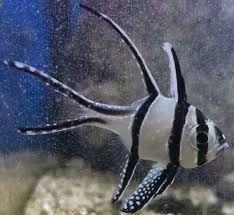Dragons and Their Connection to Plants in Chinese Culture
Dragons (lóng, 龙) have long held a central role in Chinese culture, symbolizing power, wisdom, prosperity, and balance with nature. Unlike their Western counterparts, which are often depicted as fire-breathing and destructive, Chinese dragons are benevolent beings linked to water, agriculture, and the natural world.
One of the lesser-explored but fascinating aspects of Chinese dragon mythology is their deep connection with various plants. From sacred trees and medicinal herbs to mythical flowers, many plants are associated with dragons in Chinese folklore, literature, and traditional medicine. This article delves into the significance of dragons in relation to different types of plants in Chinese culture and how these connections have influenced traditions, health practices, and symbolic meanings.
I. Dragons and Sacred Trees in Chinese Mythology
1. The Fusang Tree: The Dragon and the Sun
The Fusang Tree (扶桑树) is a mythical tree believed to be located in the eastern seas, where the ten suns rest before their daily journey across the sky. According to legend:
- A dragon carries the sun across the heavens each day, transporting it from the Fusang Tree in the east to the Ruomu Tree in the west.
- This connection reinforces the dragon’s role as a cosmic entity controlling celestial movements and maintaining balance in nature.
2. The Jianmu Tree: The Ladder to Heaven
The Jianmu Tree (建木) is another legendary tree, often depicted as a divine pillar linking heaven and earth. In some myths:
- A dragon coils around the Jianmu Tree, acting as a guardian of the cosmic order.
- The tree is considered sacred in Daoist traditions, symbolizing enlightenment and the connection between the physical and spiritual realms.
II. Dragons and Plants in Traditional Chinese Medicine
1. Dragon’s Blood Tree: The Source of Healing
The Dragon’s Blood Tree (龙血树, Lóngxiě Shù) is an actual plant with deep cultural significance in China.
- The red resin extracted from this tree, called Dragon’s Blood (龙血, Lóngxiě), has been used in traditional Chinese medicine for centuries.
- It is believed to have healing properties, particularly for treating wounds, improving circulation, and enhancing spiritual energy.
2. Dragon’s Beard Grass: The Herb of Longevity
- Dragon’s Beard Grass (龙须草, Lóngxū Cǎo) is a traditional herb believed to promote longevity and strengthen the body’s internal energy (Qi, 气).
- Many Daoist alchemists included this plant in their elixirs of immortality, reinforcing the association between dragons and longevity.
III. Dragons and Mythical Flowers in Chinese Folklore
1. The Dragon’s Pearl and the Lotus Flower
One of the most iconic images in Chinese art and folklore is the dragon clutching a flaming pearl, which is believed to symbolize wisdom and enlightenment. Some legends link this pearl to the sacred lotus flower (莲花, Liánhuā):
- The lotus, which rises from the mud to bloom in purity, reflects the dragon’s ability to control chaos and bring harmony.
- Many Buddhist and Daoist temples feature dragons intertwined with lotus flowers in their architectural designs, symbolizing spiritual growth and wisdom.
2. The Peony: The Dragon’s Royal Flower
The peony (牡丹, Mǔdān), known as the “King of Flowers,” has deep connections to dragons and imperial power.
- In the Tang Dynasty (618–907 CE), emperors adorned dragon robes with embroidered peonies to represent prosperity and national strength.
- In folklore, dragons were said to rest in gardens where peonies bloomed, as the flower’s beauty complemented the dragon’s majesty.
IV. Dragons and Agricultural Crops
1. The Dragon and Rice Cultivation
Rice (dào, 稻) is China’s most important staple crop, and dragons are closely associated with rice cultivation.
- As water deities, dragons were believed to control rainfall and ensure a bountiful harvest.
- Farmers often performed dragon dances during planting and harvesting seasons to invoke the dragon’s blessings for good weather.
2. The Dragon’s Influence on Tea Culture
- The Longjing Tea (龙井茶, Lóngjǐng Chá), one of China’s most famous green teas, literally means “Dragon Well Tea.”
- Legend states that a dragon lived in a well in Hangzhou, and its magical waters gave the tea its unique flavor.
- Even today, Longjing Tea is revered for its purity, elegance, and connection to dragon mythology.
V. Dragons in Chinese Gardens and Landscape Design
1. The Role of Dragons in Feng Shui and Plant Placement
- In Feng Shui (风水), dragons are linked to the flow of energy (Qi, 气) in landscapes.
- Many traditional gardens are designed with dragon-shaped ponds and pathways to channel positive energy.
2. The Dragon Claw Maple: A Tree of Power
- The Dragon Claw Maple (龙爪枫, Lóngzhǎo Fēng) is a unique tree named for its twisting branches that resemble dragon claws.
- It is often planted in temples and palaces to attract strength and protection.
VI. Conclusion: The Enduring Connection Between Dragons and Plants in Chinese Culture
From sacred trees and healing herbs to symbolic flowers and agricultural crops, the relationship between dragons and plants in Chinese culture is profound and enduring. Dragons are not merely mythical creatures—they are guardians of nature, bringers of prosperity, and symbols of balance between heaven and earth.
Even in modern times, this connection is visible in festivals, tea culture, traditional medicine, and landscape design, reminding us that the dragon’s legacy continues to thrive in China’s natural world.


